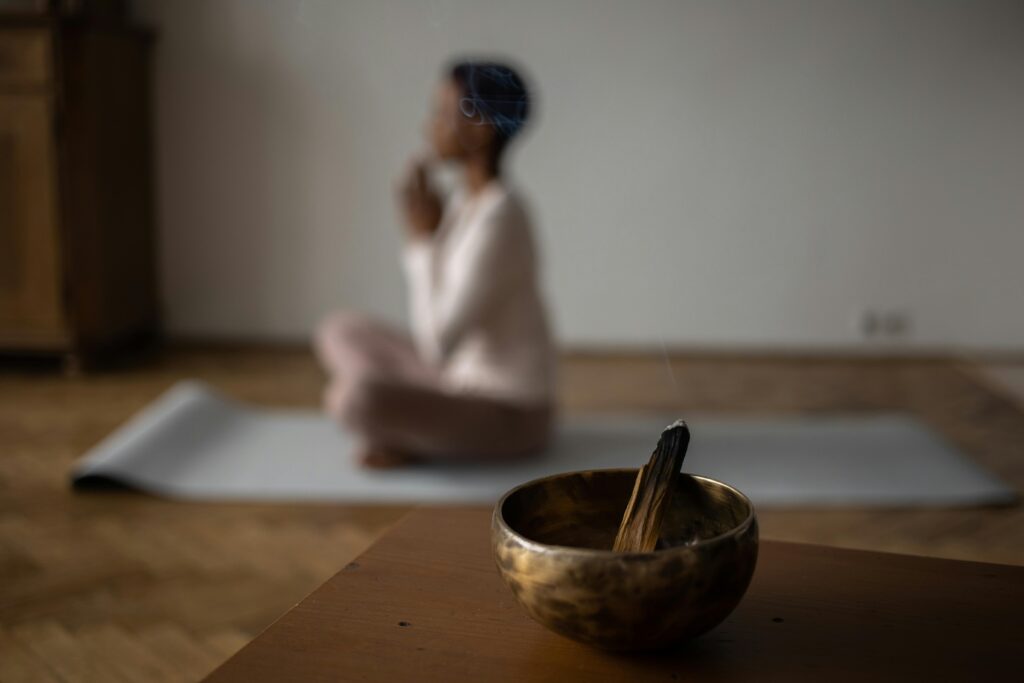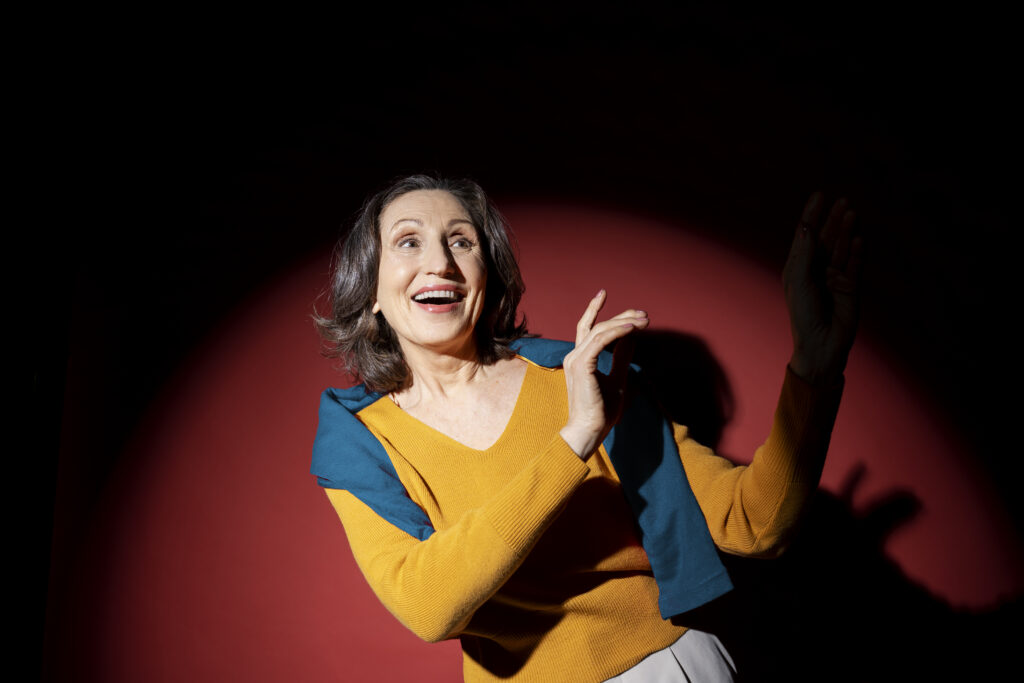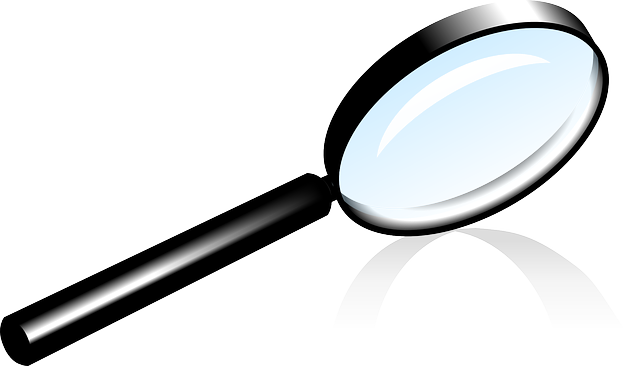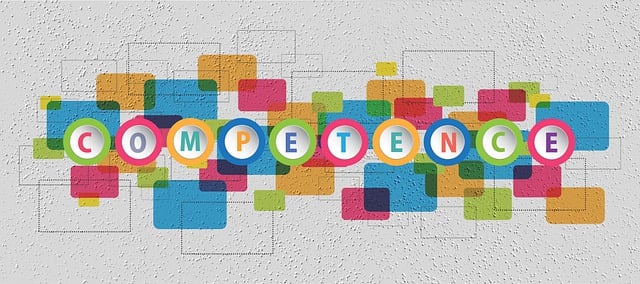The Transformative Power of Helping Others

A Journey Toward Kindness, Connection, and Collective Growth In a fast-paced modern world, where the race for achievement and the pursuit of personal goals often take center stage, the simple act of helping others can sometimes feel like a distant ideal. Yet throughout history, the practice of extending a helping hand has been the foundation upon which thriving communities are built and the underlying current that propels humanity forward. Helping others is not just a moral duty—it is a source of profound personal enrichment, a spark for societal change, and an invitation to experience the true meaning of connection. In this blog, we journey into the heart of what it means to help others, exploring why it matters, the various ways we can make a difference, and how these acts ripple outward, shaping lives in ways both seen and unseen. Why Helping Others Matters At its core, helping others is an expression of empathy—the ability to understand and share the feelings of another. Empathy prompts action, transforming compassion into tangible benefit. Whether it’s offering support to a friend in need, helping people to access resources to make their life easier to manage, volunteering at a local shelter, offering a ride to a doctor appointment, or simply lending a listening ear, acts of kindness uplift individuals and inspire hope. But the impact of helping others extends far beyond immediate recipients. Altruistic behavior is deeply rewarding, releasing endorphins and fostering a sense of fulfillment. Helping others may provide a high level of happiness, decreased stress, and improved mental health. In fact, communities built upon cooperation and generosity are more resilient, adaptable, and harmonious. Moreover, helping others challenges us to see beyond our own perspective. It cultivates humility, broadens our understanding of the world, and bridges gaps that divide us. When we step into another’s shoes, we learn the value of patience, gratitude, and shared humanity. Everyday Acts of Kindness Helping others does not always require grand gestures. In fact, the most transformative acts are often the simplest ones, woven quietly into the fabric of daily life. Here are a few ways to foster kindness and support within your own community: Offer a smile or a kind word: A genuine greeting or a simple compliment can brighten someone’s day and foster a sense of belonging. Listen actively: Sometimes, the greatest gift we can give is our attention. Listen without judgment; let people know they are heard and valued. Share your skills: Whether it’s tutoring, fixing something, or teaching a craft, sharing what you know can empower others and cultivate lifelong connections. Volunteer your time: There are countless organizations that rely on volunteers, from food banks to animal shelters, to giving someone a ride to the grocery store. Even a few hours can make a significant impact. Support local initiatives: Attend community events, promote small businesses, or participate in local cleanups to strengthen the fabric of your neighborhood. Be there in times of need: Reach out to those who are grieving, struggling, or facing challenges. Sometimes, presence alone is a powerful form of help. The Ripple Effect: How Helping Others Multiplies One of the most remarkable aspects of helping others is the ripple effect it creates. Acts of kindness inspire others to pay it forward, generating waves of goodwill that extend far beyond the original gesture. When you help someone, you set a precedent—they, in turn, may help someone else, and so the cycle continues. Communities built on mutual support become stronger, more compassionate, and better equipped to face collective challenges. I saw this happen in my workplace as we came together to help patients. Consider the story of a teacher who goes above and beyond to encourage a struggling student. That student’s newfound confidence may translate into success, which could inspire them to mentor others later in life. Small acts, multiplied over time, become sources of transformation and growth. Overcoming Barriers to Helping Despite its many rewards, helping others is not always easy. Barriers can include time constraints, fear of rejection, uncertainty about how to help, or even concerns about being taken advantage of. Yet most obstacles can be overcome with mindful intention and a willingness to learn. Start by recognizing that imperfection is not a flaw—it’s a part of being human. You don’t need to have all the answers or fix every problem. Often, simply showing up, offering encouragement, or sharing a moment of understanding is enough. If you’re unsure how to help, ask questions and listen to what people need, rather than assuming. Remember, the most meaningful help is tailored to the individual and given without expectation of reward. Helping Others in a Digital Age Technology has transformed the ways in which we interact and support one another. Online platforms and social media offer new opportunities to spread kindness, share resources, and connect with those who may be isolated or in need. Virtual volunteering, fundraising campaigns, and crowdsourcing solutions have become powerful tools for collective action. However, digital spaces can also breed misunderstanding and disconnect. The challenge is to use technology intentionally—to foster real relationships and encourage genuine support. Consider joining online communities that align with your passions, sharing positive messages, or donating to causes that resonate with you. The digital world, when harnessed thoughtfully, expands the reach of our helping hands. The Personal Benefits of Helping Others While the purpose of helping others is not personal gain, the benefits to the helper are undeniable. Serving others boosts self-esteem, reduces feelings of isolation, and provides a sense of purpose. It can also offer perspective during difficult times, reminding us of our own strengths and resources. Helping others teaches vital life skills—communication, empathy, adaptability, and conflict resolution. It encourages gratitude and reorients priorities, focusing attention on what truly matters. For children and young adults, participating in acts of service fosters character development and empathy, laying the groundwork for lifelong engagement. Stories of Kindness: Inspiration from Around the World Across cultures and continents, stories of kindness abound, offering inspiration and hope. Volunteers
The Heart Behind Hoarding

Have you ever walked into a space so cluttered with things that you could barely breathe? That happened to me when I went to visit a friend who had just had surgery. I can’t even imagine how my face must have looked when I walked in and saw her two dogs and a cat crawling not only on everything — but on me as well! I couldn’t find a place to sit, and I was so distracted that I don’t even remember what I was saying. My friend, however, was completely relaxed on what might have once been a bed in her living room— now covered with so many things — smiling at me, clearly happy to see me! As soon as I saw the cat, I came up with an excuse and told her I was allergic. I left her place quickly and walked straight home. Once I got back to my clean, tidy space, I started cleaning again. I’m not sure what kind of trauma my mind went through during those ten minutes, but I couldn’t stop until that uneasy feeling finally left my system. We all pile up things in our homes at times, and that clutter can weigh us down. When the piles are finally cleared or the papers are sorted, we feel better — lighter, even, on an energetic level. But this behavior isn’t about laziness or a lack of desire to be organized. The source goes deeper. Hoarding is not about collecting things — it’s a cry from the soul. Its emotional pain bundled with fear, often rooted in unresolved trauma. When our inner world feels out of control or we experience loss in any form, we tend to try and control our outer world. We hold onto objects that make us feel safe, comforted, and loved — creating the illusion that the loss hasn’t happened. When we lose someone close to us — or even a part of ourselves — anxiety and fear about the future and its uncertainty can take over. Depression can creep in, showing up as intrusive thoughts, dark moods, or heightened control. I remember when I lost my father ten years ago — my first deeply personal loss. I started checking all the doors in the house before going to bed and double-checked the stove multiple times to make sure it was off. Because of my ADHD, I often wouldn’t register what I was doing during these routines, so I’d end up repeating them over and over just to feel safe for the night. I want to emphasize again: that people who struggle with hoarding are not lazy or careless. In fact, many feel deeply abandoned or unloved. The clutter becomes a kind of fortress — a way to feel safe and protected from further hurt. When we’re also dealing with physical issues — like respiratory problems, asthma, chronic lung conditions, or allergies — clutter becomes more than just emotional weight. It becomes a health hazard. Too many items prevent proper cleaning, allowing dust, allergens, and mold to accumulate. The air we breathe becomes polluted — and emotional distress begins manifesting as physical illness. There are many diseases and disorders caused by bacteria, dust mites, mold, and stagnant energy in untouched corners of our homes. Our living space is sacred. It’s a place where our body and mind should feel calm and safe. Our physical surroundings are deeply connected to our energetic field. How can we relax in chaos? When our space feels blocked, our mind does too. Because I suffer from respiratory issues, I’ve learned to declutter every few months. I walk into my walk-in closet and make sure I can actually walk into it — not just squeeze between bags and items. I donate clothes, shoes, purses, and books that I no longer use, knowing someone else might benefit from them. Sometimes, it’s hard to let go of my favorite things. But if they no longer serve me — emotionally or physically — I know it’s time to release them. Even with items I’m emotionally attached to, I’ve learned to let go with love, reminding myself that the memory of the person lives in my heart, not in the object. When we let go, we create space — not only to breathe easier but to move stuck energy. For growth to happen, we need free space — both around us and within us. Our minds reflect our environment. It’s up to us to choose today what kind of space we want to live in — and how we want to feel in it. Nameste, Shab
Navigating PTSD After Cancer Treatment

Receiving a cancer diagnosis is an earth-shattering experience on its own. Add to that the constant poking of needles, patiently holding still for scans, and waiting for test results, and it’s easy to see how these experiences can take a toll on your emotional and psychological well-being. While the illness manifests on a physical level, the true battle is much deeper. It’s not just the body that’s impacted; your whole being walks this path. Post-Traumatic Stress Disorder (PTSD) is a very real side effect of cancer treatment I vividly remember my reaction to a simple word my yoga teacher used during meditation, a word that triggered old fears and physical sensations. She said: “Scan your entire body!” Even years after my diagnosis and treatments, certain words, images, and even smells take me back to that hospital environment— a time in my life when everything felt out of control like my world was spinning and I had nothing to hold onto. While medical staff tried to be compassionate and supportive, they were not walking this journey with me—I was. The term PTSD is often associated with military soldiers returning from combat, having experienced violence. But facing a life-threatening diagnosis is, in many ways, the beginning of a different kind of battle. The violence comes in a different form, through invasive and aggressive treatments like chemotherapy, radiation therapy, and surgery. Surgery, in particular, disrupts the body’s internal energy. Our bodies were not meant to be opened or poked—if they were, we would have been made with doors and windows like a house. A body needs harmony and peace to function in a healthy way. When I reacted to my yoga teacher that day, I realized that my scars—both physical and emotional—had not fully healed. I needed to give myself more time and care to find peace within my body. I began paying closer attention to my daily thoughts: What thoughts had become a permanent part of me? Were they fearful, filled with worries about my body? Did I fear losing my loved ones to disease or tragedy? How could I quiet these thoughts and reach a more peaceful mind? Having a regular meditation practice and calming my mind through breathwork helped to some extent, but I realized that these thoughts had taken root over time, and I needed to dig deeper. I began reframing my visits to the doctor and follow-up tests. Instead of recalling past fears, I started reminding myself that I was in control of this journey. I now approach every appointment as a step toward healing. If I stay home and avoid appointments, I risk the possibility of the disease returning. But by showing up, I am choosing to take charge and do what I can to help my body. I also allowed myself to talk openly about my journey in safe spaces, with friends and support groups who were ready to listen. Every time I shared my story, I felt I healed a little more. I stopped hiding my fears—about the future and even the present. I let go of the guilt I felt for surviving when some of my friends had not. I accepted that this journey is uniquely mine. While the medical staff focused on the physical aspects of my recovery, I knew it was crucial to address my emotional and psychological well-being as well. Returning to my regular routine wasn’t easy. I felt lost. I had been away on a long, transformative journey, and now everything felt different. How could I return to the life I had known? The word “normal” didn’t quite fit anymore. I had to create a “new normal” for myself, carrying this new set of experiences into this next phase of life. I knew time would allow me to gradually figure out the steps to recovery. I also realized I had to be more flexible than ever before to deal with my new mental state. My mind, which needed more attention and care than before, had to be treated gently. I needed to be kind to myself as I helped my mind heal. Consistency and discipline became important as I worked to establish a new routine. I realized that my body was no longer the same as it was before cancer treatment. What I had once been able to do, physically, was no longer possible. Shorter exercise routines, fewer social gatherings, and carving out solitude for self-care became my new normal. I stayed in touch with fellow cancer patients who were going through similar treatments. I didn’t want to mask the reality of my experience but wanted to face it in a healthier way, with a fresh perspective. I no longer wanted to feel anxious every time the phone rang from my doctor’s office or when I approached a hospital building. Meeting with some of my cancer recovery friends once a month reminded me that I wasn’t alone in my thoughts or feelings. I just had to be more mindful and not feed into the negative narratives my mind wanted to create. I know that healing takes time, and the journey is a roller coaster of emotions. PTSD symptoms may stay with me for the rest of my life, but how I react to them is what matters most. I accept them with love but refuse to give them the power to control me. My PTSD is a real struggle, but healing is possible, and I will not give up on my mind. Nameste, Shab
Energy healing and its power

As a former radiation therapist, while working with patients, my intuition often nudged me toward a fact that was rarely discussed. My gut feeling told me that we are not just this physical body, but there are other ways to heal the body. We not only have the physical body that we can see and touch, but also another body—our energy body—within our physical body. The only difference is that the physical body has blood and other bodily fluids flowing through its channels, while the energy body has a flow of energy. We are surrounded by and connected to an energetic system that flows through us, and this energy plays a significant role in our overall well-being. While working in hospitals, I often felt something was missing in completing the patient’s care—energy healing. It could complement modern medicine and offer a more holistic approach to healing. Understanding how energy healing works on the subtle body and its channels can give us insight into how this type of healing can prevent illnesses and diseases from arising. Why not address the physical body and, at the same time, heal the energies responsible for maintaining harmony throughout the whole system? Just as we have veins and arteries, we also have channels that are not visible to the medical team because they are considered non-physical. These channels make up the subtle body, which holds our emotions, mental state, and spiritual states. The subtle body operates on a deeper, more energetic level. It contains multiple layers that hold these emotional, mental, and spiritual states and is responsible for processing the energies that influence our well-being. At first, I didn’t understand how the subtle body worked or how important it would be in my healing practice. We have over 72,000 channels called Nadis. The Prana or Qi flows through these pathways, maintaining the balance necessary to stay healthy physically and emotionally. When these pathways become blocked by emotions or illness, the result is often a physical manifestation of disease. Most imbalances in these channels don’t happen overnight. Emotions have a way of getting stored in these channels, and if healing doesn’t occur, these imbalances eventually show up as physical symptoms. Over the course of my 25 years of working with patients, I heard similar stories of emotional turmoil and unresolved life challenges that had put significant stress on their bodies. A life without its ups and downs would seem like a life never truly lived. We all go through challenging experiences—situations that are difficult to digest or impossible to accept. Ultimately, we have no choice but to face them. Our bodies carry the toll of our emotions, and we, as humans, operate from our emotional state. This raised a question in my mind: What can we do to prevent illness? Is there a way to stay truly healthy, avoiding disease altogether? The first time I received energy healing from a friend; I felt an immense sense of physical relaxation. Over time, I realized the profound benefits of this type of healing. My mind became calmer, and I felt more at peace. Little did I know, this energy healing—whether my friend was touching specific points on my body or simply hovering her hands over them—was balancing my Prana or Qi. She was the conduit for transferring the necessary healing energy into my subtle body, unblocking and restoring the essential pathways. As a result of her ability and my body being ready to receive, my physical and emotional body (subtle body) began to show signs of strength and improvement. Emotionally, I became more resilient and gained clarity about what I wanted from life. I was able to set goals and achieve them, which boosted my confidence. The depth of this therapy reached deep into my cells, promoting healthy cell regeneration. I began experiencing what my intuition had hinted at months earlier. I was able to keep illness at bay, boost my immune system, reduce stress, and manage my anxiety. I was finally seeing the root causes of my disease in my habits and behaviors. I began feeling happier, more hopeful, and no longer burdened by the sense of being stuck. My negative thought patterns started to fade away. Energy healing changed my life. To the present time, I have been illness-free for over twenty years! I became more mindful of my body, mind, and breath. This new awareness of my energy system has made me more attuned to my health. As soon as something feels off, I notice it right away and can address it through breathwork, yoga, or regular energy healing sessions. Energy healing is a powerful tool available to us today. Why not use it to restore balance to our energy as soon as possible, allowing us to live in a healthier body? By investing in yourself, you are not only reducing the stress in your system but also nurturing the deeper layers of your being. Nameste, Shab
Clouds of Doubt

The day I heard the words ‘poor prognosis,’ my world crumbled. A dark cloud started following me everywhere. I felt alone in the entire world with this cloud over my head. No one else could see it, but I could. How is it possible? I see this thick cloud with no light in it, and life is going on like nothing has happened! It felt heavy, and I could not breathe. There was no oxygen, or at least not where I was standing. Every thought and every breath felt heavy, and hope seemed so far out of reach. Before I knew it, I was walking under this cloud, and my journey of treatments and endless doctor appointments had begun. I realized this storm would not pass quickly. There were days when I felt like staying in bed under the covers until it was all over, but the voice inside me kept nagging me to get up and face the impossible. It kept showing me that this journey was worth fighting for and that I should not give up. Nothing was clear in my mind; chemo drugs didn’t help either, creating their own cloud in my head. Not only did I have the thick overhead cloud, but I also had a smaller one in my head that made my vision hazy just enough to navigate through the fog of the day. I kept up with my prayers to keep me grounded and closer to my spiritual roots. The days when I was floating, trusting that this, too, shall pass, became my mantra. The solitude was loud, and no matter how many people visited or called to hear my voice on the phone, I couldn’t feel the connection. After all, they weren’t under my cloud. They were living their lives, and they didn’t know what I was going through. Yes, I felt sad and sorry for myself. Despite all the inner nagging and negative thoughts, my feet drove me to all my treatments. Upset at being in the clinic for hours and not enjoying my movies, I showed up for each one of them. Accompanied by a close friend, she worked while I lay there in my chemo chair, hoping that one day, all this experience would become as blurry as my current vision. Don’t get me wrong; the thought of not existing came to me daily. All the what-ifs had their answers, more or less. Anxiety had become part of the cloud. When it showed up, anxiety was written all over it. Negative thoughts and made-up scenarios were written like a professional screenplay. I was so good at it that I thought I must have missed my calling. I could have written so many fantastic films. Maybe I could have gone to the South of France and participated in the Festival of Cannes! I had the experience of anticipating different events in my life, but nothing came close to the waiting game for a phone call from the doctor. Not only did I have to subject myself to hours of scanning by giant machines and injections, but I also had to wait to hear the results. It didn’t matter how hard I worked to write my new screenplays while waiting; my mind wanted to hear from my doctor. The one phone call that might determine the rest of my journey. “Should I stay or should I go now?” The song kept repeating in my head. I finally dozed off to a sweet dream. Here I am, six months later. The air feels a little lighter. I can breathe better. I looked up, and the thick cloud started to break. The scan showed progress—hope. I was overwhelmed. I realized the light of hope had always been there, quietly waiting, but I couldn’t see it with my blurry vision. The uncertainty had created the darkness of my cloud; the light was always above it, but not visible. Since it seemed that I would stay, I asked myself, “What should I do with the remainder of my cloud?” “Should I focus on the light that’s coming through?” I have the power to see a more powerful light and let go of the cloud for good. The scan had given me the chance to strike again. My body is saying, “I am taking a break. Enjoy it.” We all face storms from time to time. They vary in strength and speed. We all have those moments when we can’t breathe properly. But we can’t forget that hope is always there. We might not see it clearly, but it doesn’t move, despite our foggy minds. Even when we choose not to see it, it is shining on us from afar. After all, the sun isn’t close by, but it still keeps us warm and brightens our day. Nameste, Shab.
Balancing the Air Element (Vata) in Ayurveda: A Path to Calm and Clarity

Do you ever find yourself unable to focus on one task, jumping from one project to another? What happens when the mind tries to do too much at once? This isn’t something new for anyone. We’ve all experienced it. It’s frustrating when we start a project, only to move on to another before finishing the first one, leaving us with multiple unfinished tasks and nothing fully completed. In Ayurveda, an ancient Indian science, this type of behavior is considered a sign of an imbalance in the Air and Ether elements within the mind. But what does that mean? The Air element in Ayurveda has dry, light, clear, and mobile qualities. Like the wind in the sky, it moves within the Space (Ether) of our body and mind. The Air element is formless, but it can be felt when we breathe, as our lungs expand and contract, or when our muscles move and our hearts palpitate. This same flow occurs in our intestines, where food is digested and eliminated. Similarly, the mind experiences a flow of thoughts and desires that are governed by the Air element. When the Air element is out of balance, we might experience rapid thoughts, jumping from one idea to the next. But when it is in harmony, we experience peacefulness and clarity. Imbalance can bring fear, anxiety, and insecurity, creating a sense of unease. Ayurveda teaches us to understand the nature of our mind, to comprehend why we think and act as we do, and to show compassion toward ourselves. With this knowledge, we can apply holistic practices tailored to restore balance, helping us become more productive in our lives. A balanced mind leads to a more organized approach to work, smoother management of personal life, less stress over finances, and healthier relationships with ourselves and others. The Air element (Vata) in our internal world can be like the wind causing fire or environmental disturbances in nature. The difference is that our internal world is governed by a subtle energy called biological movement. The breath (prana), our life force, is deeply connected to the Air element. Our cells communicate through this flow of energy, and Vata governs both our physiological and emotional functions. When we are upset or anxious, we breathe faster, signaling that the Air element is responding to our emotional state. On the other hand, when we are calm and happy, our breath is slower, indicating that Vata is balanced. So, how can we use this knowledge to maintain a balanced state of mind? The truth is, there’s no such thing as a permanent state of happiness and calm. As humans, we are emotional beings, and we react to our environment and experiences. It’s impossible to be in the same mental state every hour of the day or night. However, the good news is that we have control over how we manage this state. In typical situations, when we receive bad news, our initial reaction is often emotional. Over time and with practice, we can learn to return to a balanced state of mind. There are several simple holistic practices you can use in your daily routine to make this transition smoother: Use your breath: Start by taking three mindful (being focused) breaths and slow breaths to calm yourself down. Practice silence: Spend 10–15 minutes daily in silence, allowing your mind to settle. Avoid distractions like music, TV, or talking to others during this time. Take walks in nature: If possible, take off your shoes and walk barefoot on the grass. This will ground you energetically and calm your mind. Sit by water: If you’re near a body of water, sit quietly and observe the natural movements on the surface. The peacefulness of water can help still the mind. Drink herbal tea: Enjoy a warm cup of herbal tea, which can soothe and calm your thoughts without overstimulating your mind. The air element calms down with heat. Rest your mind: If you feel mentally fatigued, take a short nap. Cat naps are particularly effective for both the mind and body. By doing these practices, you’ll find that your projects get completed without the usual frustration. You’ll experience a sense of calmness and balance that may have previously seemed impossible. Balancing your Air element is an act of self-love and self-care in Ayurveda, bringing harmony to both your mind and body. Namaste, Shab.
Fun Improv Activities Awakens Deep Listening Skills

Simple and Profound “That’s the first time I ever felt heard”, a nurse shared during a communication workshop! My jaw dropped. I wondered how she could possibly be a good listener if she didn’t know what it was like to feel heard. It was a powerful teaching moment for me in terms of integrating improv activities into communication workshops. Image by Myriams-Fotos from Pixabay The nurse had just participated in an experiential activity I adapted from improv to teach communication and related skills. A a teacher, the nurse’s feedback was compelling. I could see how it would help her appreciate the value of truly being heard. From here, she could internalize the experience and develop awareness about listening with respect to being connected, understood, valued This skill development is much deeper than simply hearing what someone says and checking off a box. It is a door to becoming more sensitive to how and when this kind of focused listening could be helpful. Such as a patient who is nervous about a procedure, a family member becoming angry about a treatment issue, or a colleague showing signs of burnout. What’s more, her future life experiences, feedback, and leadership guidance could all be grounded back to this simple, profound experience. This contributes to a ripple effect of more awareness and skill development for the nurse and modeling for all in her circles. What is this activity? Same-Time-Story, also known as Story Mirror, involves one person telling a story while her partner tries to tell it simultaneously. Something you can only do by focusing on what your partner is saying and if s/he goes at a pace conducive to your success. You can see it here in this two-minute video from a workshop several years ago. Notice how in the middle I tap one of the participants on the shoulder, signaling the switch of leadership roles! https://www.youtube.com/watch?v=h8yj7r_C36k Other valuable feedback When facilitated properly, Medical Improv experiences like this are engaging and safe for social and emotional development. The learning is internalized as staff practice, reflect on and discuss the skills, and their application to professional communication and organizational goals. In this particular activity, participants have shared things like: “I had to focus on her and stop thinking.’ ‘Her facial expressions helped.’ ‘I realized I was speaking too fast.’ ‘You never know what is going on in someone’s head.’ ‘It was fun!” Imagine how the learning content can be framed around vital skills such as expression of nonverbal language, identifying social cues, developing awareness of speaking too fast for someone to understand and what that might feel like, and/or realizing we don’t know what others are thinking even if we think we do! When facilitated properly, Medical Improv experiences are engaging and safe for social and emotional development. The learning is internalized as staff practice, reflect on and discuss the skills, and their application to professional communication and organizational goals. With this activity, nurses, doctors, and other healthcare professionals become better prepared to listen attentively to an anxious patient, a colleague in trouble, constructive feedback from a manager, or a family member with signs of escalating anger.
Looking for signs of humanity? Try this!

What are humans capable of? Take a minute and watch this powerful video. See what it brings up for you in terms of human nature and what’s possible. Even in today’s chaotic world and often amidst emotionally challenging interactions. https://youtu.be/7qzMfgtf_GI?si=KTk8rVYqPDnTwMtK What are humans capable of? Sometimes, glimpses into human behavior offer surprises. What did you observe in this little video? I found it compelling because it shows us: What can happen in a pause? How kindness is contagious. How technology does not have to drive our behavior. How moving gratitude and compassion are So much about My Work Product is based on helping each other. That’s why, when I saw it, I couldn’t resist sharing it here!
6 Communication, culture, and leadership issues that ensure qualified staff

Having unqualified people in jobs they should not be in is not an issue about diversity, but rather one of communication, culture, and leadership. Here are six related issues that influence the likelihood that qualified staff are in positions that require high reliability: 1. Leaders and staff are skilled at giving and receiving constructive feedback so that teaching and learning are going on all the time. 2. All levels of staff are willing and able to ask for help, set limits, delegate tasks or say “No” when they need to. 3. All levels of staff are respectful of others’ limits, and leaders respectfully address patterns of excessive need for help, time management, and training needs on an individual by individual. Image by Ahmad Ardity from Pixabay 4. Expectations for performance are clear and consistent. 5. Leaders advocate for and ensure the resources necessary to follow protocols, procedures, and policies are available (incl: staff, time, money, training, and equipment). 6. Evaluations of performance are objective, fair, respectful, and intended to ensure high reliability. Identifying underperforming or unqualified people need not be a personal affront and can include support in finding an appropriate job match. Can you think of any other issues as viewed from this lens?
A House Full of Open Windows

Have you ever had days when you couldn’t get out of bed or do anything productive? Doesn’t it feel like they last forever? No matter how positively you think or speak to yourself, those days linger, refusing to pass. Six months ago, after a setback in my health, I felt discouraged and unmotivated to pursue anything new. My body was fatigued and defeated. I tried every tool I had learned over the years—techniques that usually lifted my spirits—but nothing seemed to work. The simple truth? I didn’t feel well, period! You see, I am what some would call a “professional student.” Even now, in my sixties, I love learning new skills, reading the latest self-discovery books, and continuously improving myself. I make it a priority to move my body daily, doing my best to keep it healthy. But when my body doesn’t cooperate, I have no choice but to manage my symptoms and wait for time to heal them. Honestly, out of thirty days in a month, I’m lucky if I get one good week. I have learned to call those good days my open windows—windows of opportunity to engage in positive and normal activities for my body and mind. On my not-so-good days, I do my best to count my blessings, using them as a distraction from the negativity that illness can bring. I remind myself how wonderful it is that I can still breathe on my own, walk without assistance, and eat independently. I stay close to my spiritual practices, which keep me grounded. My mantra music (Kirtan) is another way I cleanse my mind of negative thoughts that tend to appear when I’m down. It’s easy to spiral into darkness when pain and fatigue take over—a deep well where no one can see you, not even those closest to you. It feels as though you are underground, unheard, and alone until your body begins to recover, even if just temporarily. Yes, I call them not-so-good days because, in reality, bad days don’t exist. It is only by comparison that we categorize them. I choose to see those days as windows closing. When they shut, I no longer experienced the normalcy of my life. But that doesn’t mean they’re closed forever. They will open again, allowing me to see the light—I just have to be patient with my body. Have you ever looked at a house and wondered why it has so many windows? Even a house needs open windows to let in fresh air and release what no longer serves it. These windows allow light to shine in, bringing hope and renewal. They offer a clear view—perspectives that the house needs to understand its surroundings. One window might open to the main road, where the hustle and bustle of the neighborhood create a lively picture. The back windows may reveal a serene backyard, where calmness resides. Each side window presents a different perspective on life’s unfolding story. Together, all windows are necessary, creating a panoramic view of existence. I am that house—filled with memories, lessons, and wisdom gathered over the years. When I was younger, I had a fresh paint and a stronger foundation. Now, with time, signs of aging have appeared—cracks, rust, and wear. Yet within my walls, I remain resilient, standing tall despite the passage of time, eager to see the world through all my windows. Today, the sun is shining, and my windows are wide open! No aches, no pain. I remind myself that I still have time to learn, to grow, and to welcome new experiences. Good days and not-so-good days will come and go. Windows will open and close according to the laws of the Universe and the path I have chosen. I trust that I will continue managing my symptoms with kindness and patience. After all, this is my only house—with so many windows open to me. I feel blessed to have them: to spend time with my granddaughter, to walk by the ocean and witness life’s marvels, and to share moments with family and friends who mean the world to me. My house and its windows are here to stay, and I plan to open them—one by one—to live a full and meaningful life. Nameste Shab

